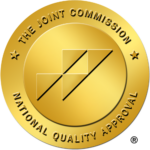What is Acceptance and Commitment Therapy and How Can It Help Me?
It’s human nature that we avoid pain. Sometimes we do so unconsciously, such as moving our hand away from something hot that could cause a burn. Other times, we actively avoid current and future pain, especially psychological pain.
This very normal tendency, however, can create long-term dysfunction in our lives. Often, the lengths we take to avoid discomfort lead to problematic patterns of behavior and issues that are more severe than the initial difficulties that occur.
This understanding is key to learning what acceptance and commitment therapy (ACT) is and how it is implemented.
What is acceptance and commitment therapy?
Developed in 1982 by Dr. Stephen C. Hayes, acceptance and commitment therapy is a psychotherapy approach that stems from cognitive behavioral therapy. The idea behind acceptance and commitment therapy, often abbreviated ACT, is that avoiding psychological distress often causes more distress in the long run.
ACT aims to teach what’s been termed “psychological flexibility.” This is a problem-solving approach that focuses on changing a person’s mindset about the perceived problem as opposed to the actual problem itself. Self-awareness and mindfulness are core skills of this action-oriented approach.
The basis of this framework of therapy is that pain, anger, discomfort, anxiety, grief and illness are inevitable facets of living. Rather than suppress or ignore life’s misfortunes, acceptance and commitment therapy teaches strategies to embrace and manage difficulty through psychological flexibility. This allows people to engage in life without resorting to counterproductive attempts to avoid problems.
How is acceptance and commitment therapy implemented?
Acceptance and Commitment Therapy is a form of psychotherapy or talk therapy. Generally, ACT is implemented in one-on-one sessions with a therapist, counselor or social worker as part of a treatment plan for a mental health disorder, trauma, stress or any type of emotional distress.
According to Neurotherapeutics: the Journal of the American Society for Experimental NeuroTherapeutics, ACT has proven to be effective in not only mental health conditions but primary care and specialty medical clinics, too. Moreover, ACT can be implemented to address multiple conditions at once.
ACT emphasizes identifying valued life areas as part of treatment. This shifts a person’s mental focus from problems that occur to solution-focused thinking and naturally creates motivation. These value areas could include intimate relationships, career success or spiritual peace despite challenging circumstances.
ACT is implemented using the following six steps in order to create psychological flexibility:
- Mindfulness of the present moment
- Keeping a balanced and objective perspective on thoughts and feelings that occur
- Clarifying goals and value areas of life
- Committing to living in such a way as to achieve goals in valuable areas of life
- Consciously accepting the discomfort that comes with such a way of living
- Stepping back from thoughts that stem out of distress
In order for these steps to be implemented, a person must draw on their own self-awareness in order to accurately assess the effectiveness of the actions and change accordingly.
How long does acceptance and commitment therapy last?
According to Neurotherapeutics: the Journal of the American Society for Experimental NeuroTherapeutics, ACT is a relatively short treatment that can be administered in a variety of ways. It has been shown to produce benefits when offered in a one-day program, through telehealth and via smartphone apps.
While ACT can be implemented quickly or over the course of time, it is generally provided in 60-minute sessions, once a week for eight weeks.
Acceptance and commitment therapy exercises
Even before starting formal treatment, you can take advantage of some aspects of ACT. While most effective when guided by a professional, these acceptance and commitment therapy exercises can help you face the challenges of life.
Mindfulness
Mindfulness is a core skill used in the implementation of ACT, and it can be easily done on your own. All mindfulness requires is a greater awareness of your physical surroundings and mental state. Try a guided mindfulness meditation online, spend time observing wildlife or sit for 10 minutes, focusing on objectively soaking up your surroundings.
Journal
Writing down your thoughts can help you view them from an objective lens. Try writing down your thoughts as a stream of consciousness for five minutes, then reading them through and determining whether they are biased or neutral. This will create a foundation for understanding the difference between emotionally charged and balanced thoughts.
Brainstorm goals
Acceptance and commitment therapy is forward-focused and emphasizes a strong commitment to personal goals and values in life. Thinking about your value areas of life offers natural inspiration for bearing through difficulties.
Consider brainstorming goals and values for different areas of your life, such as—finances, family life, church participation, lifestyle, nutrition, exercise and so forth. Deciding what’s important to you and ordering your priorities can help you put distress in its place.
Starting acceptance and commitment therapy
If ACT seems like a form of therapy you’re interested in, check out Freedom Detox. At Freedom Detox you’ll learn how to identify your personal value areas and take actionable steps towards fostering the life you want. Contact us today to regain your freedom.










